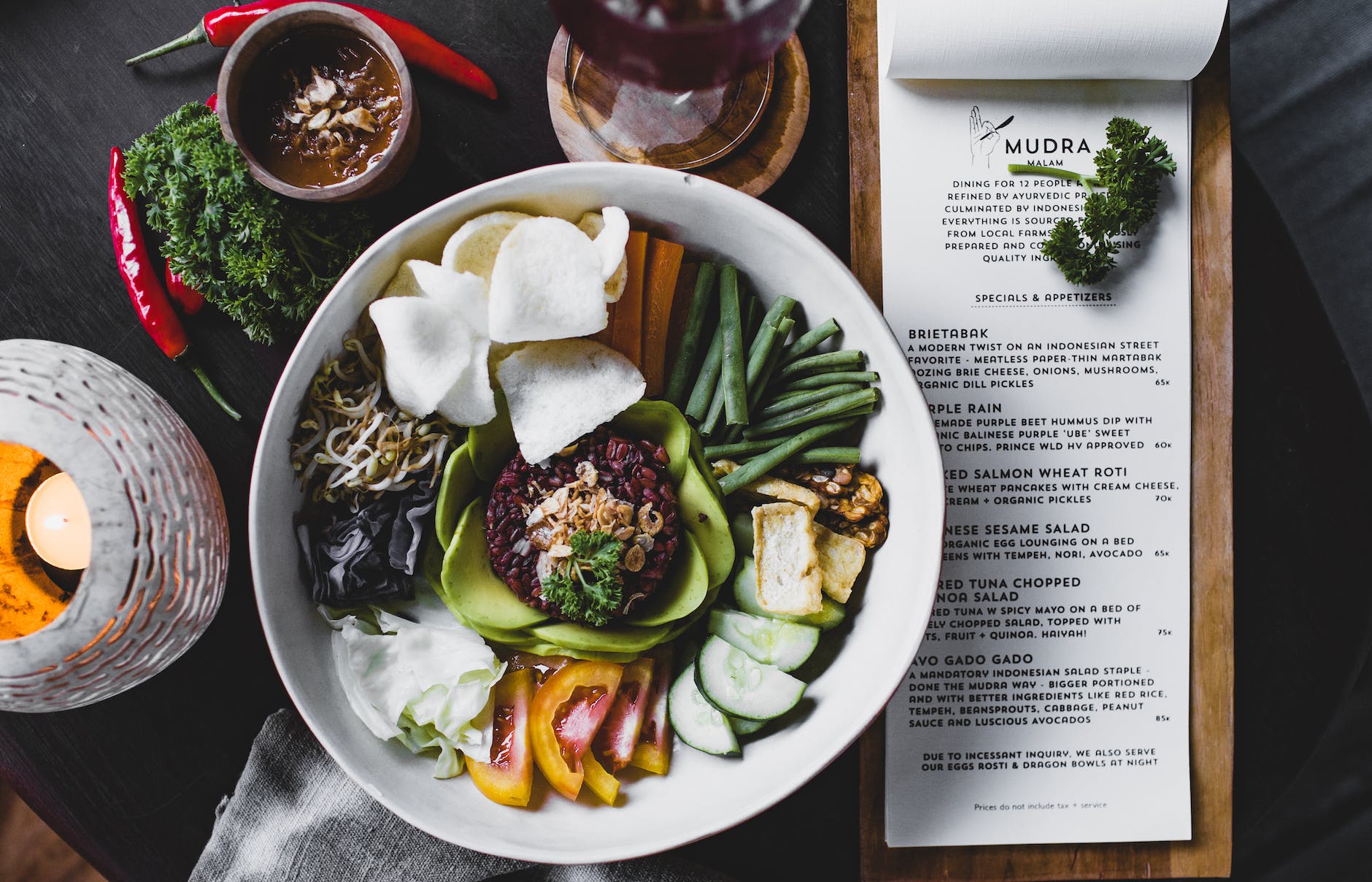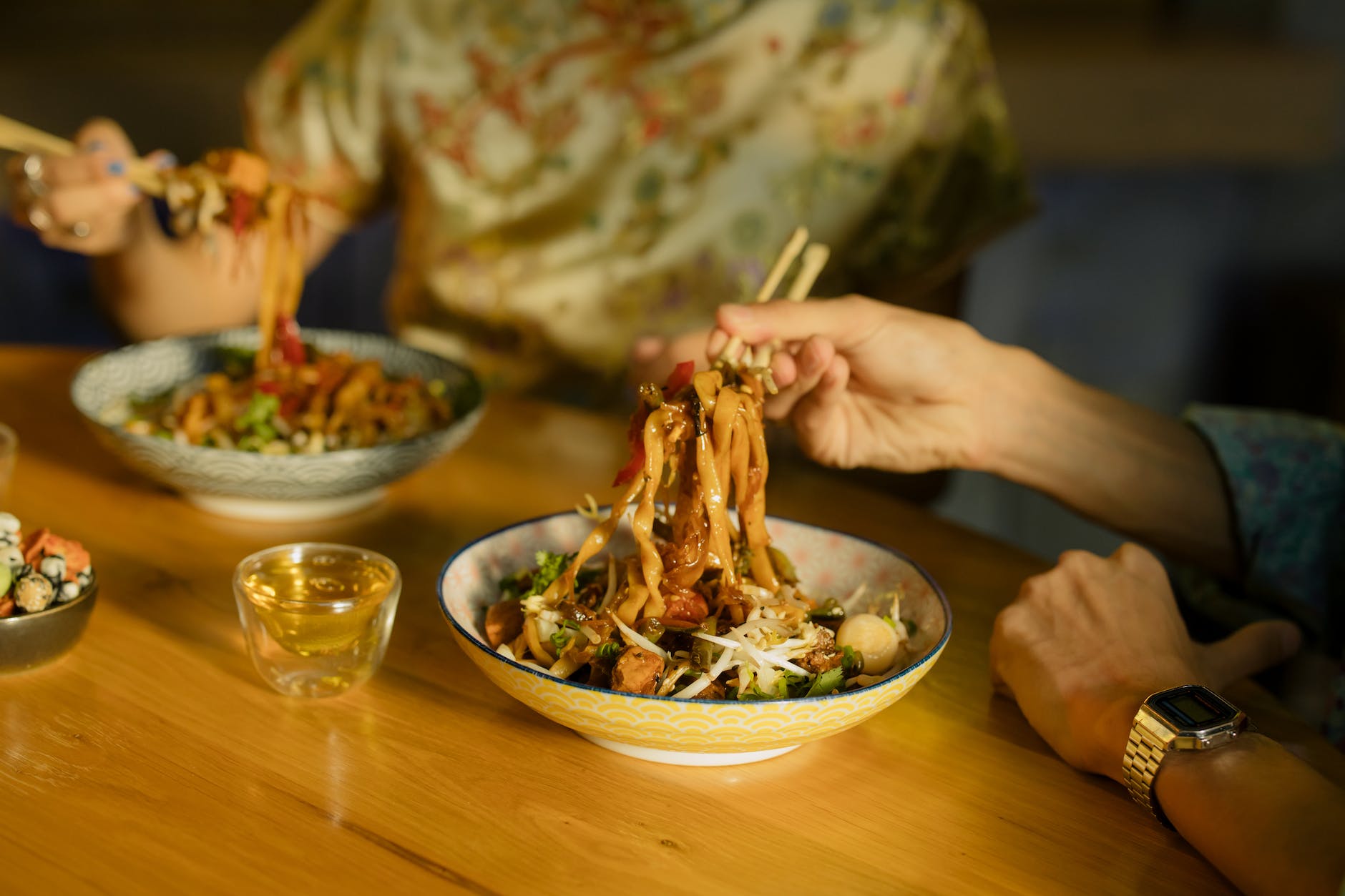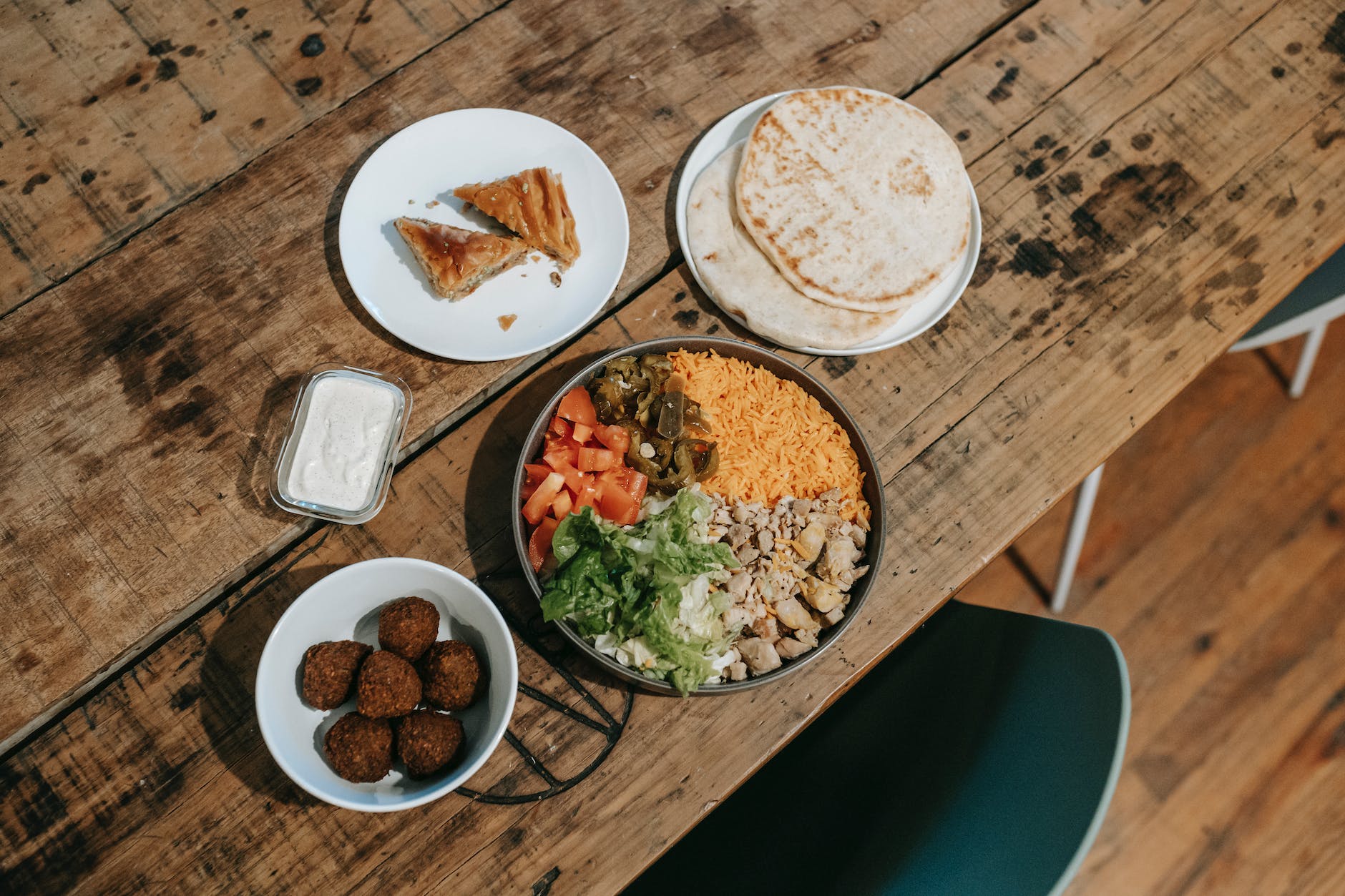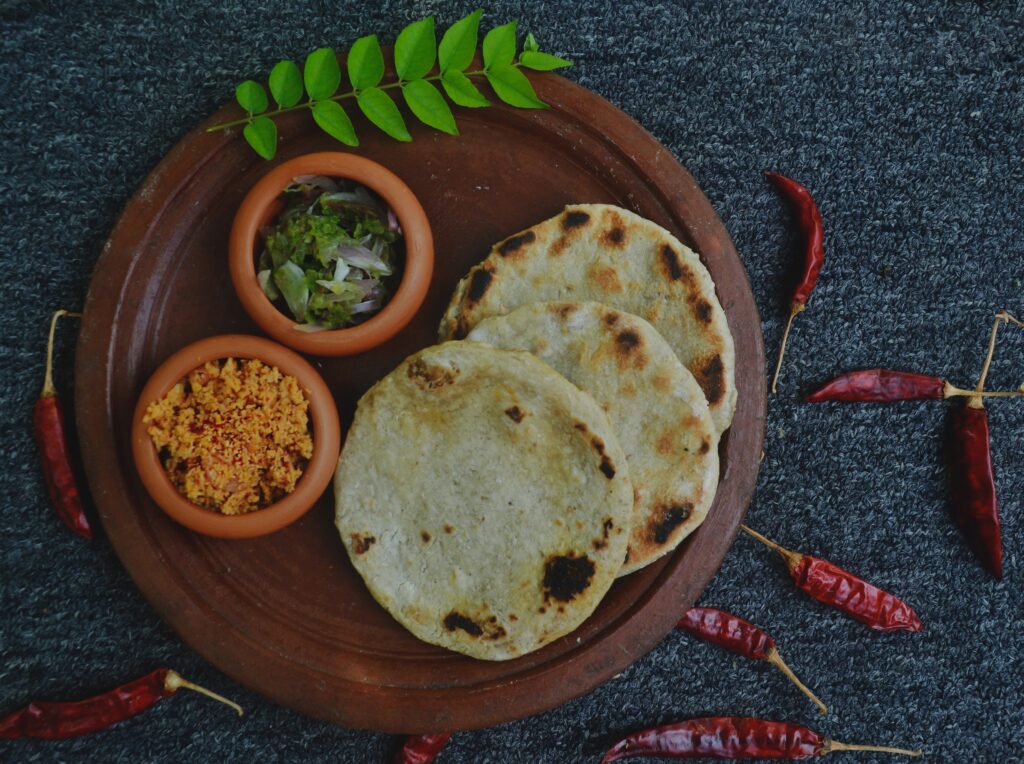Introduction
Southeast Asia is a treasure trove of diverse cultures, rich history, and, of course, incredible culinary experiences. The region boasts a vibrant tapestry of flavors, blending the freshest ingredients, exotic spices, and culinary traditions passed down through generations. In this article, we will embark on a gastronomic journey through Southeast Asia, exploring its culinary heritage, top destinations for foodies, street food delights, fusion cuisine, and even the health and wellness aspects of the local dishes.
The Diverse Cuisine of Southeast Asia

An Introduction to Southeast Asian Cuisine
The culinary landscape of Southeast Asia is as varied as its landscapes. Each country in the region offers a distinct taste, reflecting its unique history and culture. From the aromatic curries of Thailand to the mouthwatering delicacies of Malaysia, every bite takes you on a new adventure.
The Melting Pot of Flavors: A Blend of Cultures
Southeast Asia has long been a melting pot of cultures, and its food is a true reflection of this diversity. Influenced by Chinese, Indian, Malay, and European traditions, the region’s cuisine boasts a delightful array of tastes and aromas. From the fiery spices of Thailand to the fragrant curries of Malaysia, each dish tells a story of the people and history that have shaped it.
Rice: The Staple Diet
Rice is the cornerstone of Southeast Asian cuisine, serving as the staple diet for millions across the region. It is often paired with a mouthwatering selection of dishes, from flavorful curries to delectable stir-fries. Whether it’s the fragrant jasmine rice of Thailand or the savory nasi lemak of Malaysia, rice plays a crucial role in every meal.
Street Food: The Soul of Southeast Asian Dining

When it comes to experiencing the true essence of Southeast Asian culinary delights, the vibrant street food scene is an absolute must. Wander through bustling night markets and narrow alleyways to discover an astonishing array of delectable treats. From the iconic Pad Thai in Bangkok to the scrumptious satay skewers in Singapore, the street food culture here is unparalleled.
Exotic Fruits: A Tropical Paradise for Your Palate
Southeast Asia is a tropical paradise that boasts an abundant variety of exotic fruits. Sink your teeth into succulent mangoes, juicy rambutans, and creamy durians. These luscious treats are not only a refreshing delight but also a reflection of the region’s fertile lands and favorable climate.
The Flavors of Thailand
Thai cuisine is a harmonious blend of sweet, spicy, sour, and savory flavors. It features signature dishes like Tom Yum Goong, Pad Thai, and Green Curry. The use of fresh herbs, such as lemongrass and Thai basil, imparts a delightful aroma to the dishes.
The Richness of Malaysian Cuisine
Malaysia’s food scene is a melting pot of Malay, Chinese, and Indian influences. Nasi Lemak, Char Kway Teow, and Roti Canai are just a few of the many must-try dishes that showcase the country’s culinary diversity.
The Exquisite Taste of Vietnamese Food
Vietnamese cuisine is known for its light and refreshing flavors. Pho, Banh Mi, and Goi Cuon (spring rolls) are some of the beloved dishes that reflect the country’s love for fresh herbs and vegetables.
The Fusion of Indonesian Delicacies
Indonesian cuisine is a fusion of indigenous flavors and influences from China, India, the Middle East, and Europe. Nasi Goreng, Satay, and Rendang are iconic Indonesian dishes loved by locals and visitors alike.
The Unique Dishes of Singapore
Singapore’s cuisine is a delightful mix of Chinese, Malay, Indian, and Peranakan influences. Hainanese Chicken Rice, Laksa, and Chili Crab are some of the must-try dishes that make the city-state a paradise for food lovers.
Unveiling the Richness of Indian Cuisine

India’s culinary landscape is as vast and diverse as its colorful traditions and festivals. One cannot talk about Indian cuisine without mentioning the myriad of spices that play a central role in its flavors. The use of cumin, coriander, turmeric, and cardamom, among others, gives Indian dishes their distinct taste and aroma.
1. The Spicy Curry Sensation
Curry is undoubtedly the heart of Indian cuisine. Whether it’s the fiery hot vindaloo from Goa or the creamy and buttery chicken tikka masala from Punjab, Indian curries cater to all taste preferences. The rich gravies, tender meats, and vibrant colors make these dishes an absolute delight.
2. Savoring Street Food
Indian street food is a culinary adventure in itself. From the beloved chaats, such as pani puri and bhel puri, to the lip-smacking kebabs and samosas, the streets of India come alive with a burst of flavors. A walk through the bustling lanes presents an opportunity to indulge in these scrumptious delights.
3. The Great Indian Thali
A visit to India wouldn’t be complete without experiencing the grandeur of an Indian thali. A thali is a perfectly balanced meal served on a platter, showcasing a variety of dishes, including rice, bread, lentils, vegetables, pickles, and desserts. Each region offers its unique twist to this traditional meal.
Exploring Sri Lanka’s Culinary Treasures

Moving southward, we find ourselves on the teardrop-shaped island of Sri Lanka. The country’s cuisine shares similarities with its Indian neighbors but retains its distinctive characteristics, influenced by the island’s tropical ingredients and coastal location.
1. Rice and Curry – A Staple Affair
Sri Lanka’s version of rice and curry is a must-try culinary experience. The meal typically consists of steamed rice accompanied by an array of curries, featuring vegetables, fish, or meat, all infused with coconut milk and aromatic spices. The combination of flavors in a single serving is simply heavenly.
2. Delightful Seafood Galore
With its abundant coastline, it’s no surprise that Sri Lanka boasts a delectable selection of seafood dishes. From spicy fish ambulthiyal to mouthwatering prawn curry, seafood lovers will be in paradise while exploring Sri Lanka’s coastal towns.
3. The Allure of Hoppers
Hoppers, also known as appam, are a popular Sri Lankan breakfast item. These bowl-shaped pancakes made from fermented rice flour and coconut milk are usually enjoyed with coconut sambal or savory curries. Their unique texture and taste make them a favorite among locals and tourists alike.
Culinary Heritage and Traditions
Influences of History on Southeast Asian Food
The culinary heritage of Southeast Asia is deeply intertwined with its history. The region’s strategic location made it a significant trading hub, welcoming influences from various cultures and cuisines.
Culinary Traditions Passed Down Through Generations
Many traditional recipes in Southeast Asia have been preserved and passed down through families for generations. The preparation of certain dishes is considered an art form, and these culinary traditions play a vital role in preserving cultural identity.
Rituals and Significance of Food in the Region
Food holds immense cultural and spiritual significance in Southeast Asia. From special dishes prepared during festivals to offerings made to ancestors, food is an integral part of rituals and ceremonies.
Top Culinary Destinations in Southeast Asia
Exploring Thailand’s Food Scene
Thailand’s bustling markets and street food stalls offer an array of delectable dishes waiting to be savored. Whether it’s the fiery Som Tum or the creamy Massaman Curry, the country’s culinary offerings are sure to delight any food enthusiast.
Savoring the Flavors of Malaysia
Malaysia’s vibrant food scene is a reflection of its multicultural society. The hawker centers are the heart of Malaysian street food, offering an incredible selection of dishes that cater to diverse palates.
Vietnam’s Must-Try Dishes
Vietnam’s culinary landscape is a perfect balance of flavors and textures. From sizzling street food to elegant restaurant fare, Vietnamese dishes never fail to impress with their simplicity and taste.
A Gastronomic Journey Through Indonesia
Indonesia’s vast archipelago means a diverse range of cuisines to explore. Each region offers its own set of unique flavors, making the country a paradise for food adventurers.
Singapore’s Hidden Food Gems
In Singapore, gastronomic delights can be found in hawker centers, Michelin-starred restaurants, and everything in between. The city is a food lover’s dream, with a treasure trove of culinary gems waiting to be discovered.
Street Food Delights
The Vibrant Street Food Culture
The bustling streets of Southeast Asia come alive with the aroma of street food. These open-air food markets offer an authentic and affordable way to savor the region’s diverse flavors.
Iconic Street Food in Thailand
Thailand’s street food is renowned for its bold and aromatic tastes. From the tangy Som Tum to the savory Moo Ping, every bite is a burst of flavor.
Must-Try Street Food in Malaysia
Malaysia’s street food is a celebration of its multicultural influences. Whether it’s the spicy Satay or the hearty Char Kway Teow, the vibrant street food scene caters to all taste preferences.
Popular Vietnamese Street Food
Vietnam’s street food is a sensory delight, with dishes like Banh Xeo and Bun Cha taking center stage. The bustling streets are a paradise for food enthusiasts seeking authentic flavors.
Unique Indonesian Street Delicacies
Indonesia’s street food offerings are diverse and exciting. From the flavorful Martabak to the savory Gado-Gado, the vibrant street food culture is an essential part of the country’s culinary identity.
Street Food Adventures in Singapore
Singapore’s hawker centers are a melting pot of flavors. Whether it’s the aromatic Hainanese Chicken Rice or the savory Chili Crab, the diverse street food offerings are a treat for the taste buds.
Health and Wellness in Southeast Asian Cuisine
Balance and Harmony in Traditional Recipes
Southeast Asian cuisine is known for its balance and harmony in flavors and textures. The use of fresh herbs and spices not only enhances the taste but also contributes to the overall well-being of the body.
The Use of Fresh and Local Ingredients
The emphasis on using fresh and locally sourced ingredients in Southeast Asian cooking ensures that dishes are not only flavorful but also nutritious.
Benefits of Southeast Asian Spices and Herbs
The abundant use of spices and herbs in Southeast Asian dishes not only adds depth to the flavors but also brings a range of health benefits.
Fusion Cuisine in Southeast Asia
The Intersection of Cultures on the Plate
Fusion cuisine in Southeast Asia is a reflection of the region’s multiculturalism. Chefs combine traditional recipes with influences from other cultures, resulting in innovative and exciting dishes.
Thai-Indian Fusion
The blending of Thai and Indian culinary traditions creates a unique fusion that tantalizes the taste buds. From Masaman Curry to Thai-inspired biryanis, this fusion cuisine offers a delightful experience.
Peranakan Cuisine in Malaysia
Peranakan cuisine, also known as Nyonya cuisine, is a fusion of Malay, Chinese, and Indonesian influences. The result is a harmonious blend of flavors that captivate the senses.
French-Vietnamese Fusion
The French colonization of Vietnam left a lasting culinary influence. The blend of French techniques with traditional Vietnamese ingredients has given rise to a fascinating fusion of flavors.
Indonesian-Chinese Fusion
The longstanding Chinese influence on Indonesian cuisine has resulted in a fusion that is uniquely Indonesian-Chinese. Dishes like Bakmie and Cap Cay are delicious examples of this fusion.
Eurasian Cuisine in Singapore
Eurasian cuisine in Singapore is a beautiful mix of European and Asian influences. Dishes like Curry Debal and Devil’s Curry showcase the fusion of flavors that emerged from intercultural marriages.
Cooking Classes and Experiences
Learning the Secrets of Thai Cooking
Many cooking schools in Thailand offer immersive experiences to learn the art of Thai cooking. From visiting local markets to preparing signature dishes, these classes provide a deeper understanding of Thai cuisine.
Malaysian Cooking Classes
In Malaysia, cooking classes provide an opportunity to master the art of preparing classic Malaysian dishes. Learning from experienced cooks, participants get to savor the joys of creating flavorsome meals.
Vietnamese Culinary Workshops
Vietnam’s culinary workshops allow participants to explore the intricacies of Vietnamese cuisine. From rolling fresh spring rolls to simmering savory broths, these classes provide a hands-on experience.
Mastering Indonesian Recipes
Indonesian cooking classes take participants on a journey through the country’s diverse culinary heritage. Mastering dishes like Nasi Goreng and Rendang allows a taste of authentic Indonesian flavors.
Immersive Cooking Experiences in Singapore
In Singapore, immersive cooking experiences offer a deep dive into the city’s culinary heritage. Participants get to cook with local chefs and learn the nuances of Singaporean cuisine.
Sustainability and Ethical Dining
Embracing Sustainable Food Practices
With growing concerns about the environment, many Southeast Asian restaurants and eateries are embracing sustainable food practices. From sourcing local produce to reducing food waste, these initiatives make a positive impact on the environment.
Responsible Seafood Consumption
Southeast Asia’s proximity to the sea means that seafood is an essential part of the cuisine. Responsible seafood consumption ensures the preservation of marine ecosystems and the livelihoods of fishing communities.
Reducing Food Waste in Southeast Asia
In a region with a rich culinary heritage, reducing food waste is essential. Initiatives to donate excess food to those in need and creative recipes using leftovers contribute to minimizing food wastage.
Conclusion
Culinary experiences in Southeast Asia are a celebration of diversity and culture. From tantalizing street food to elegant fusion dishes, the region offers a culinary journey like no other. Whether you’re exploring bustling food markets or attending immersive cooking classes, the flavors of Southeast Asia are sure to leave a lasting impression.
FAQs
What makes Southeast Asian cuisine unique?
Southeast Asian cuisine is unique due to its diverse flavors, blending of cultural influences, and creative use of herbs and spices.
Which country in Southeast Asia is known for its street food?
Thailand is renowned for its vibrant and flavorful street food, offering a plethora of dishes to explore.
What is Peranakan cuisine in Malaysia?
Peranakan cuisine, also known as Nyonya cuisine, is a fusion of Malay, Chinese, and Indonesian influences, resulting in a harmonious blend of flavors.
Are there cooking classes available in Southeast Asia?
Yes, many countries in Southeast Asia offer cooking classes where you can learn to prepare traditional dishes from experienced chefs.
How is sustainability promoted in Southeast Asian dining?
Sustainability is promoted through practices such as sourcing local produce, responsible seafood consumption, and efforts to reduce food waste.